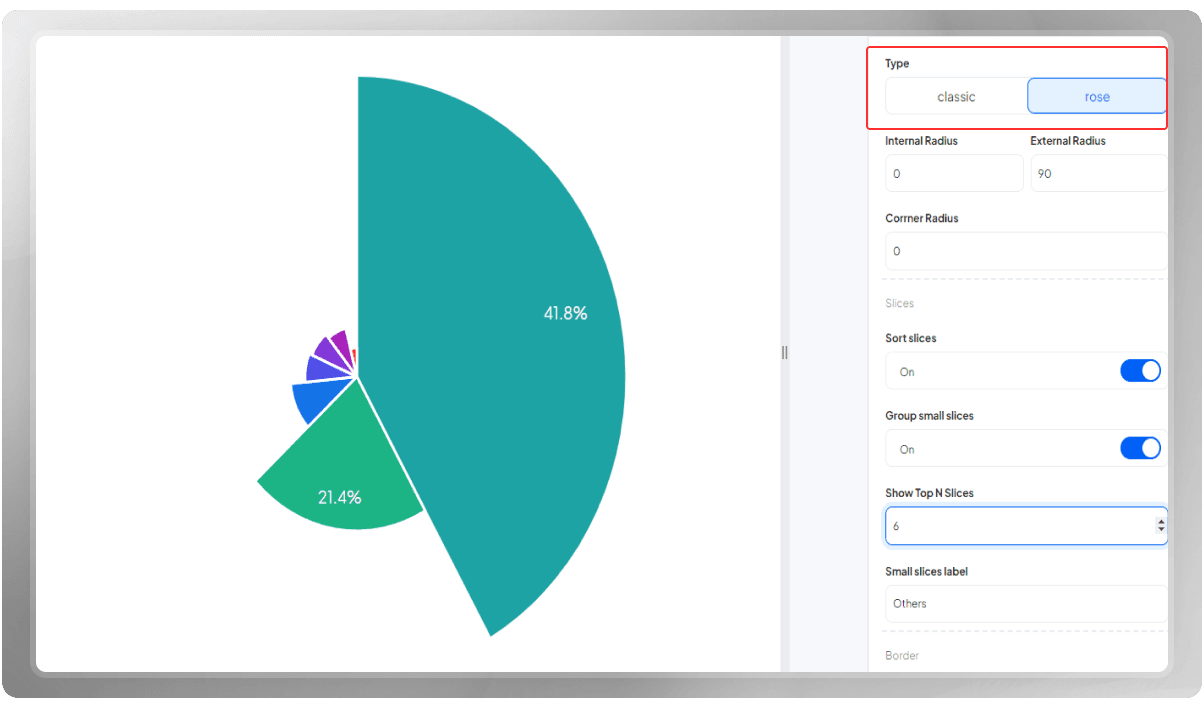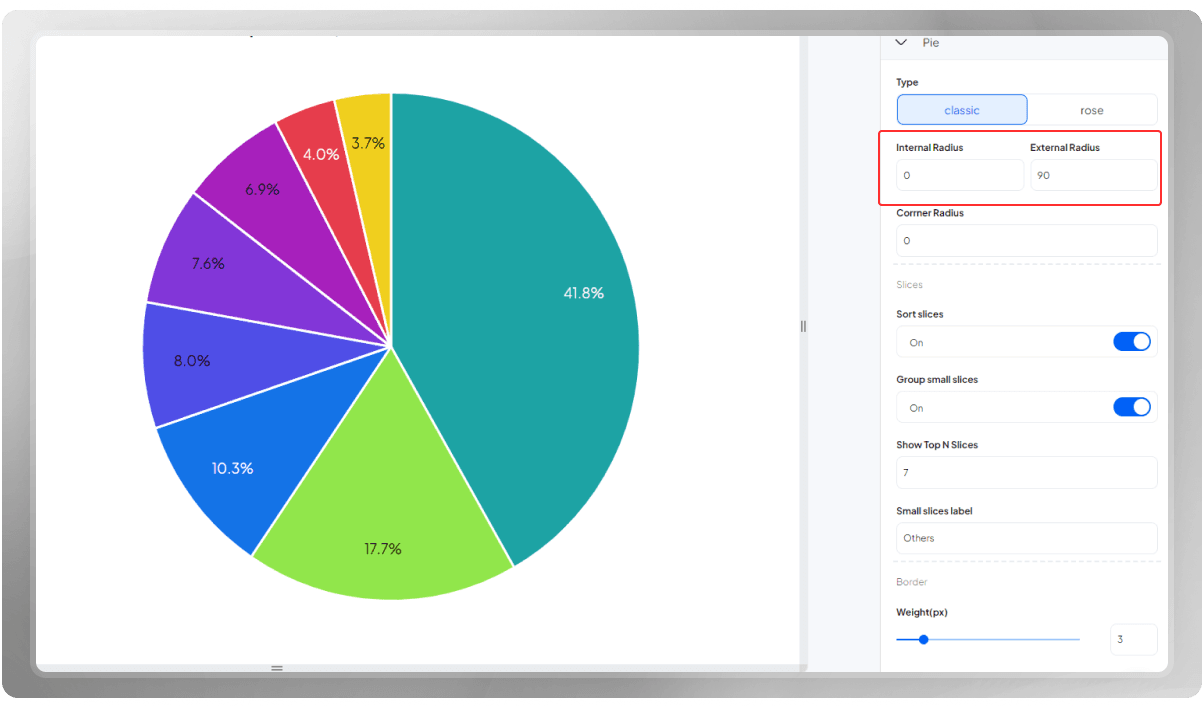Step-by-step Guide to Exploring the Pie Settings

What is a Pie chart
A Pie chart represents data as a circular chart divided into slices. Each slice in the chart represents a specific category or segment of the data, and the size of each slice is proportional to the corresponding data value or percentage.
Commonly, Pie charts are used to display the kind of data that represents parts of a whole. For instance, Market Share is a situation where a Pie Chart can be used effectively.
Pie charts are often used to represent the market share of different products or companies. Each slice represents the percentage of the market held by a particular entity, providing a clear visual comparison.
In PlotSet, you have access to different types of Pie Charts, including:
- Pie Chart,
- Donut Chart
- Image Pie Chart,
- And Dynamic Donut Chart.
Suppose you intend to create a kind of pie chart with PlotSet. There is a feature called 'Pie' in the panel of templates in this category. The following blog guides you through its different options and helps you to design your charts more efficiently.
Let's check out the options using the following Pie Chart.
You can decide whether to display values in the 'Labels' section. Would you like to place them inside the bar or outside?

As for the labels, you have the option to choose whether you like to display them as legends or over the pies. Remember that you have the option to customize the size as well.

In the 'Pie' section, a classic pie chart is the traditional and most commonly used style. In a classic pie chart, the slices are positioned next to each other in a circular shape, resembling a pie that has been cut into portions. Each slice represents a specific category or data point, and the size of the slice corresponds to the proportion or percentage it represents in relation to the whole.
On the other hand, a rose pie chart displays the slices in a radial or concentric manner. Instead of the slices being adjacent to one another, they are arranged in a circular pattern with each slice starting from the center and extending outward. The length or area of each slice still represents its proportionate value, similar to a classic pie chart.

The internal radius and external radius are key parameters that define the size and shape of the chart's segments. They determine the width and spacing of the slices within the chart.
The internal radius refers to the distance from the center of the pie chart to the inner edge of each slice. It represents the starting point or origin of the segment, where the data visualization begins. A larger internal radius creates wider slices, while a smaller internal radius results in narrower slices.
On the other hand, the external radius represents the distance from the center of the pie chart to the outer edge of each slice. It determines the extent or length of the segment, indicating how far the data visualization extends from the center. A larger external radius results in longer slices, while a smaller external radius creates shorter slices.

If you like, you can group small values into one slice. Specify the number of slices you want to display as the top labels. Here, there are 7 top companies and the companies with the smaller values are grouped into one slice. Don't forget to choose a name for this slice.

The 'Border' is the space you apply between the slices. You can increase or decrease it according to your preferences.

That's about everything you need to know. If you are interested in Pie Charts, you can read the following blog post as well: Step-by-Step Guide to Creating a Donut Chart
